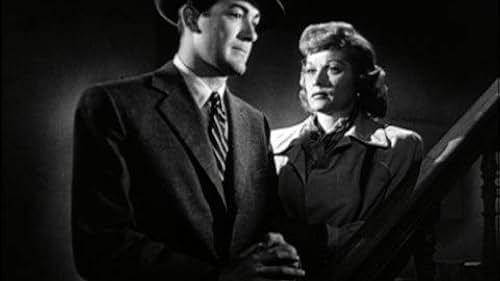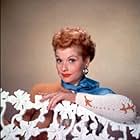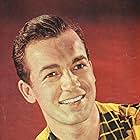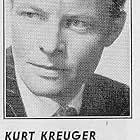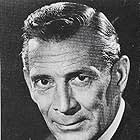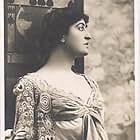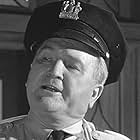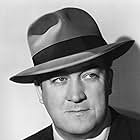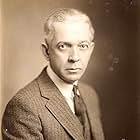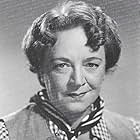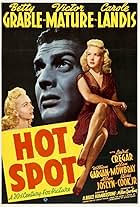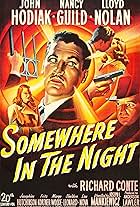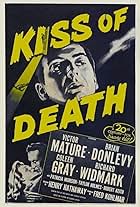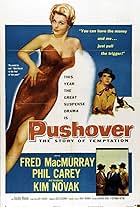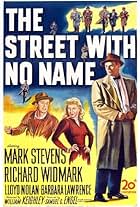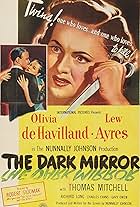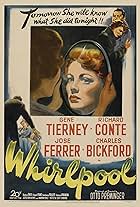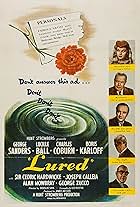IMDb RATING
7.1/10
5.4K
YOUR RATING
A secretary tries to help her boss who's been framed for murder.A secretary tries to help her boss who's been framed for murder.A secretary tries to help her boss who's been framed for murder.
- Awards
- 2 wins total
Colleen Alpaugh
- Little Girl with Slide Whistle
- (uncredited)
Charles Cane
- Policeman at Tony's Apartment
- (uncredited)
Ellen Corby
- Maid
- (uncredited)
Peter Cusanelli
- Minor Role
- (uncredited)
Ralph Dunn
- Policeman in Galleries
- (uncredited)
John Elliott
- Laundry Proprietor
- (uncredited)
Mary Field
- Movie Theatre Cashier
- (uncredited)
Alice Fleming
- Minor Role
- (uncredited)
John Goldsworthy
- Butler
- (uncredited)
Storyline
Did you know
- TriviaIn later years, Lucille Ball was vocal about hating the experience of shooting "The Dark Corner". The lion's share of her resentment was pointed at director Henry Hathaway, whose bullying reduced Ball to stuttering on set, at which point Hathaway accused her of being inebriated.
- GoofsWhen private investigator Bradford Galt strong-arms Fred Foss to reveal his home phone number, Foss replies, "CHelsea 4-43510." In the Manhattan phone book for 1946, they only had the CHelsea 2 and CHelsea 3 exchanges. This may be an early version of the 555 prefix which is the convention for fictional phone numbers.
- Quotes
Hardy Cathcart: How I detest the dawn. The grass always looks like it's been left out all night.
- ConnectionsReferenced in Cry of the City (1948)
- SoundtracksGive Me the Simple Life
(uncredited)
Music by Rube Bloom
Played when Brad and Kathleen are looking at the nickelodeons
Featured review
Mark Stevens plays Bradford Galt, a depressed, New York City private investigator who is trying to forget his troubled past. But someone is tailing Galt for reasons unknown. Lucille Ball adds charm and flair to the story as Galt's faithful, resourceful secretary who invites herself into the detective's dilemma, which eventually leads to a wealthy art collector named Cathcart, played by the suave, and always engaging, Clifton Webb. It's a sordid tale of deceit and murder, expressed visually in typical 1940's film-noir style.
Galt's surroundings are drab and dreary, in marked contrast to the lush, opulent environment of Cathcart and his elitist friends. Director Henry Hathaway leaves no doubt as to where his sympathies lie. It's the late 1940s, and the proletariat class, represented by Galt, is honest and hard working, and up against society's corrupt rich.
In contrast to other film detectives of that era, like Philip Marlowe and Sam Spade, Galt is somewhat plaintive and vulnerable, but these traits make him more sympathetic, even though he can deliver a mean punch when called for.
The film's high-contrast B&W cinematography is striking. It emphasizes harsh lighting, deep shadows, and two-dimensional silhouettes. This visual style, together with occasional sounds of jazz, conveys a dissonance we would expect in a post-WWII environment of the urban underworld. When combined with a story of one man up against sinister forces, these cinematic elements, taken as a whole, communicate a philosophy of existentialism.
For viewers who like heavy-duty 1940's noir films with interesting characters, good acting, and striking cinematography, "The Dark Corner" is one of the better choices.
Galt's surroundings are drab and dreary, in marked contrast to the lush, opulent environment of Cathcart and his elitist friends. Director Henry Hathaway leaves no doubt as to where his sympathies lie. It's the late 1940s, and the proletariat class, represented by Galt, is honest and hard working, and up against society's corrupt rich.
In contrast to other film detectives of that era, like Philip Marlowe and Sam Spade, Galt is somewhat plaintive and vulnerable, but these traits make him more sympathetic, even though he can deliver a mean punch when called for.
The film's high-contrast B&W cinematography is striking. It emphasizes harsh lighting, deep shadows, and two-dimensional silhouettes. This visual style, together with occasional sounds of jazz, conveys a dissonance we would expect in a post-WWII environment of the urban underworld. When combined with a story of one man up against sinister forces, these cinematic elements, taken as a whole, communicate a philosophy of existentialism.
For viewers who like heavy-duty 1940's noir films with interesting characters, good acting, and striking cinematography, "The Dark Corner" is one of the better choices.
- Lechuguilla
- Apr 4, 2006
- Permalink
- How long is The Dark Corner?Powered by Alexa
Details
- Release date
- Country of origin
- Languages
- Also known as
- Feind im Dunkel
- Filming locations
- Burden Mansion, 7 East 91st Street, New York City, New York, USA(The Cathcart Gallery)
- Production company
- See more company credits at IMDbPro
Box office
- Gross US & Canada
- $1,000,000
- Runtime1 hour 39 minutes
- Color
- Aspect ratio
- 1.33 : 1
Contribute to this page
Suggest an edit or add missing content


